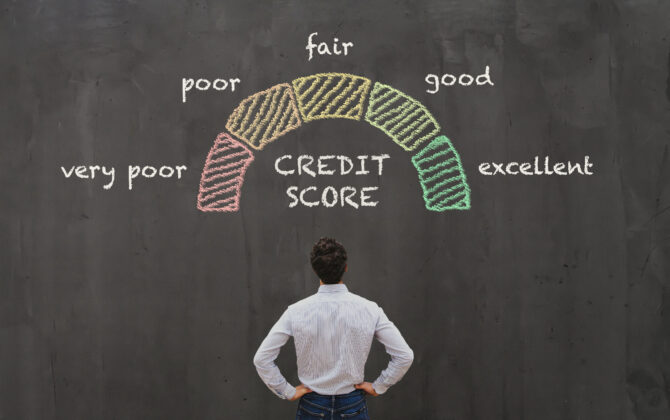Planning for the unexpected is an important and necessary part of your financial planning. Investing in an emergency fund is an important step that can help you avoid unexpected debt. When you’re paying back student loans, for example, there are defined terms and interest rates that are used to structure your regular monthly payments. But there’s no telling how much it might cost when large or unexpected expenses pop up, such as emergency room bill, sudden repairs for your home or car, or caring for a family member. When you’re faced with unexpected expenses, having a dedicated emergency fund may be the best way to manage an unforeseen hardship. Plus, you’ll have the added peace of mind that you’ll be prepared for a rainy day.
Curious to know how to start an emergency fund or why you might benefit one? We’ll answer some of the most commonly asked questions about emergency funds below.
What is an emergency fund?
An emergency fund, sometimes also known as a “rainy day fund,” is savings that you set aside in case of job loss, a medical emergency, or any other unexpected expense. Financial experts typically recommend storing 3-6 months of your current salary within your emergency fund. While savings accounts are popular options for emergency savings, a high yield savings account can provide more favorable interest rates than those offered by traditional savings accounts, helping your emergency fund grow. No matter what type of account you choose, these funds should be easily accessible, meaning you don’t have to pay penalties or go to great lengths to withdraw the funds quickly.
If you haven’t had an emergency fund before, you may not be convinced that emergency funds are an essential part of financial security. Here are a few more reasons why an emergency fund may be useful.
Why you need an emergency fund
It might help to think of an emergency fund as an insurance policy against sudden expenses. The premiums you pay are deposits to your account—in this case, your bank account—and you draw on these funds as you need them. You can even set your own payback terms for everything: the payment intervals, amounts, and limit, no interest rate necessary.
When you use your emergency funds to pay for unexpected costs or expenses beyond your budget, you won’t need to rely on securing additional funds from loans or lines of credit. These options can come with steep fees, high interest rates, and the risk—or reality—of unmanageable debt if used too frequently.
Once you decide to build an emergency fund, the next step is learning how to make these savings part of your regular financial routine.
How to save for an emergency fund
Create a budget
No matter how you keep track of your budget, you’ll want to start with knowing how much you want to put aside for emergencies.
First, calculate your monthly income, after taxes. Then, calculate how much money you have to spend on loan repayments, living expenses, and any other regular monthly bills. What remains after you subtract your monthly expenses from your monthly income is your discretionary budget: the amount of money that you don’t have specific plans for. Budgeting a portion of your discretionary budget towards savings is how you can start to create an emergency fund. Start small if needed, even $50-$100 per month, until you build up to your budget goal. You can also automate your savings transfer to make sure you stay on track.
Slowly save more
With a budget in place, it’s time to create your savings plan. First, take notice of your spending habits. For example, do you order delivery more than you buy groceries? Ordering out is an expensive habit and if you can start making your own meals, the funds you save can be redirected into an emergency fund.
Is the money you have saved for an emergency earning interest? Consider depositing your emergency funds into an interest-bearing high yield savings account with a higher APY (annual percentage yield) so that your emergency fund can work a bit harder for you.
Monitor your progress
Watching your emergency fund’s balance grow month after month can be satisfying and encouraging. Set a daily or weekly reminder to check your account balance so that you’re always motivated to meet your emergency savings goals.
Set aside unexpected earnings
Did you experience a windfall in the market or get an extra bonus at work? Still getting cash in your birthday cards? Anytime you receive money you weren’t expecting, it’s a good opportunity to accelerate your emergency fund savings goal. If depositing this money into your emergency fund helps you meet or exceed your savings goals, feel free to reward yourself for your dedication and discipline.
Emergency Fund FAQs
How much should I put in an emergency fund?
Many financial experts recommend saving anywhere between 3-6 months of your current salary. Working in high-stress, fast-paced, or dangerous work environments may encourage you to save even more. And the peace of mind that comes from knowing that you can prepare for any emergency can certainly help motivate your savings habits.
Where should I store my emergency fund?
Simple access to your emergency fund should be your top priority. This isn’t to say that you should line your mattress pad with stacks of cash either. An FDIC-insured savings account allows you to securely deposit and withdraw funds whenever you need them. Some of the most competitive high yield accounts like the one offered by Laurel Road, feature both an annual percentage yield (APY) that’s much higher than the national average, and you won’t pay any monthly fees.
When should I use an emergency fund?
Everyone’s “emergency situation” is different, so it’s best to define what an emergency means to you before you spend all your emergency savings. Is an unexpected $1,000 expense enough for you to dip into your fund, regardless of what it’s for? Or are there certain instances—your car breaks down, you lose a tooth, you need to travel to see a sick family member—that count as an emergency? Since everyone is different, only you can know what the word “emergency” means to you.
Bottom line: How to start an emergency fund
While the future may bring uncertainty, your finances can help you be prepared. A recent Laurel Road survey showed that 52% of millennials and Gen Z respondents feel like the ability to save more money would help them have their finances under control. While you’re busy setting financial plans for your future, an emergency fund is a good way to start to keep your current finances on track in case of unforeseen expenses. If you follow these steps, you’ll be well on your way to saving for the unexpected, come rain or shine.




